Beyond the boundary: Harmanpreet Kaur on living her dream and chasing the ultimate trophy
Cosmo cover star Harmanpreet Kaur, who captains the India women’s national cricket team, lets us in on her unending zeal for life.

Hailing from Moga, Punjab, captain of the Indian women’s cricket team, Harmanpreet Kaur grew up amidst many gender stereotypes—no cricket team for women to begin with—yet her heart and mind told her she would make it anyway. She convinced herself she would play for the men’s team if it came to it. But not wearing the blue cap for India? There was little chance she was giving up on that dream. Since her debut for India in 2009, Kaur has seen it all—the skimpy recognition of women’s cricket, heartbreaking injustice, the game’s slow but steady growth, and its appreciation in Indian households today. Kaur remains unapologetic about her love for the game, and it is her unabashed aggression, grit, and determination that led to her epochal unbeaten 171 against Australia in the semi-finals of the T20 World Cup in 2017, captaining Mumbai Indians to a glorious victory in the inaugural season of the Women’s Premier League (WPL) in 2023, and becoming the only Indian woman with more than 3000 runs in T20 internationals matches. She’s living her dream. But she keeps chasing the one that remains unfulfilled—winning the World Cup for India— and she won’t settle for anything less.
In a candid conversation with Cosmopolitan India, the Indian captain speaks of her biggest inspirations, toughest challenges, why she loves being a woman, and much more.
Cosmo India: How did cricket happen for you? Did you, at any point, think it was unusual for a girl to be playing cricket?
Harmanpreet Kaur: The love for cricket came to me from my father. I would see him come home with trophies won at local matches that he would play on the weekends. I was always inspired by how he would work during the week and take time out to play cricket on the weekends, and I admired how proud everyone was of him. Winning games and being the hero looked very exciting, so I decided to build a career that would make my parents feel extremely proud of me. Yet, considering that cricket was always a male-dominated sport, I knew that it was going to be an uphill climb—there would be struggle and it would be difficult to find a platform. There was a time when I felt that I would end up playing in the men’s team if there was no women’s cricket at the national level.
C: You joined the Indian team when women’s cricket was just about garnering attention. Take us through both sides of the experience.
HK: When I first got selected for the Under-19 state team [Punjab], I think I was just so grateful that such a space existed for women, and that my coaches introduced me to professional cricket. After this, I started playing at national-level tournaments and ultimately got selected for the Challengers Trophy [a tournament in the one-day format from where many players have gone on to play for India]. By then I knew that if I continued to work hard, my career was going to grow and I would be wearing the blue cap that I had been dreaming about. I also know that women’s cricket was in a better place than where it was earlier. That year [2008] was also the first year that the Indian women’s team came under the Board of Control for Cricket in India. Initially, it was really hard and we hardly played any tournaments throughout the year. But, with time, the women’s team began winning more titles, which in turn helped the sport grow more—at the global level.
C: Have you ever been made to feel less than, because of your gender?
HK: I was very young when my mother once came and told me, ‘You’re just playing with the boys in the gully [bylane]. You have no vision for your career or professional life.’ She asked me to start learning how to cook, and even told me to wear a salwar kameez [Indian traditional wear]. When I questioned her, she told me, ‘You are in the eighth grade now. If you don’t study or have any interest in pursuing higher education, in the long run, you will have to get married, just like the other girls.’ I replied saying that I was going to pursue cricket and I would make a life out of it. After that, she never asked a single question again. She even helped me build a disciplined and sport-oriented life.
However, when I told my mother what I was passionate about—the first thought in my mind was how was I going to do it? Would I even get the opportunity? Would I have a mentor? How would this dream even become a reality? But I looked at myself in the mirror and said, “I’m going to get this done.”
A year later, my school principal happened to watch me play cricket with the boys in the park, where he used to come regularly for a walk. When he asked me whether I wanted to play in the women’s team, I replied, “Is there a women’s team?” He said that even if there was no team, he would create one. I didn’t think twice. That was the happiest day of my life.
C: What are the things that make you proud to be a woman?
HK: While growing up, my mother always taught me the importance of goodness, kindness, and how to sacrifice for good. It was all that I ever learned. She taught me the morals of life. She is both strong and emotional. Being a woman has taught me grace, humility, and most importantly, to see the brighter side of everything. We are two sisters and one brother, and I learnt the importance of equality while living in a male-dominated society just with the help of my parents who never raised us with any biases. To me, being a woman is an asset—it’s about believing in the strongest version of yourself and chasing the impossibilities of life.
C: How has your relationship with your body changed over the years?
HK: Thankfully, I have always respected my body. I try to stay fit, eat right, and always give my body the priority it deserves. Whatever I am today is because of my body—it has helped me achieve success in my sport. In my teens, I never felt exhausted or lacked energy. When I was nearing my thirties, I realised that I would have to work on my body twice as much if I wanted to keep feeling the same way. C: How has your understanding of beauty changed over the years? HK: Beauty lies on the inside—beauty, to me, is the determination, the zeal, and the motivation to achieve anything and everything beyond the imaginable.
C: What challenges does women’s cricket face today?
HK: Lack of young girls in cricket. It’s a grassroots-level problem. I visit academies where the ratio of girls to boys is 1:4. I would encourage parents to support their daughters if they want to take up a sport professionally. Women’s cricket will only grow when work is done at the grassroots level.
C: Do you think there is still a discrepancy in the way male and female cricketers are treated and perceived?
HK: Considering the current scenario in the national cricket team, I believe a lot has turned in our favour with all the hard work that our seniors have done to empower the growth of women’s cricket. The pay parity was announced, the WPL has had a successful second season, and more Test matches have been included in our calendars. I believe in the next few years, domestic cricket will grow and we will have much more talent coming in to support the game, many more tournaments to be played and televised, and brands coming in to support and nurture talents across the platform.
C: With the growth of women’s cricket, have you felt the pressure to perform increase?
HK: I have always dreamt of playing in a full stadium—I used to go to bed thinking about this moment. Today, when I see that happen, it’s surreal and magical. The days our team does well, I see the crowd get emotional and scream our names from the stands. It feels like I owe something to this society. On the days we don’t do well, it’s a pretty hard pill to swallow. It’s funny that a lot of appreciation that we get go away instantly on the days we fail. Social media gets flooded with negative comments. I think the pressure comes from the fact that you want to do well and win every time you go onto the field—sometimes only to not disappoint the people who have so much faith in you.
C: How important is downtime and prioritising mental health?
HK: After a lengthy tournament, I take time off to stay at home, be with my family, maybe watch something, and unwind for a good 48 hours. Taking a break is very essential for your mental health and I don’t like to put too much pressure on myself on my off days.
C: What has been your toughest challenge so far?
HK: Changing the mindset for women’s sports in India. There were times when I felt there was no opportunity for me, but today I see every other person talk about women in sports. I believe a large part of my life’s purpose has been to contribute to this change.
C: You made your debut for India in 2008 when you were 20. What was that moment like? And how does it feel every time you put on the blue jersey?
HK: That small girl dreaming of playing for India and wearing the blue cap witnessed a glimpse of her dream at the age of 20. The moment was surreal. It was unimaginable. I was never going to look back. I was just proud, and all I wanted to do was to serve the team and my country to the best of my ability. I always idolised players like [Virender] Sehwag and Yuvraj Singh. For me, it was time to play with legends like Anjum Chopra, Jhulan Goswami, and Mithali Raj.
C: From being a player in the team to becoming the captain— how has the experience changed your approach towards the game and your team members?
HK: From being an aggressive player for my team to becoming a cool captain was a lot of work. I had to tell myself time and again that it’s about how I lead from the front— the way I am going to be, will reflect on my team. From there onward, I kept my personal performance and mood aside and always showed up for my team. The team environment is more important than how I am feeling. I try to engage each one of them in conversations and team activities so that they do not feel left out or less than. It encourages each one to be their best. The best team is the one that dreams and works together. As a captain, I have tried to inculcate this energy in my team.
C: What are some of the biggest life lessons that cricket and captaincy have taught you?
HK: Cricket has taught me the best lessons of life. First, cricket has made me a sportsperson inside out, which means I am always following my routine and taking care of myself and those around me. I respect and value time. I am a huge believer in the energies I attract. My learning of teamwork and cooperative responsibility has come only through sport, the people I’ve met along the way, and the mentors I’ve had.
C: Over the years, who have you looked up to as a mentor and role model? And what is your goal with the young cricketers you mentor?
HK: I grew up being mentored by my dad, and then my coach. With professional cricket, I looked up to Sehwag and Yuvraj Singh. I always try to tell young aspiring girls that if you feel it and believe in it, there’s nothing in the world that will stop you from achieving it. My whole life depended upon what I thought and how I perceived my goals, dreams, and beliefs. I did not doubt myself.
C: What’s the cricketing dream you are yet to achieve?
HK: The one that we all are waiting for—the world title in our name.
C: What keeps you going?
HK: The thought that my ultimate dream is still unfulfilled.
Editor: Pratishtha Dobhal (@pratishtha_dobhal); Digital Editor: Sonal Ved (@sonalved); Photographer: Sasha Jairam (@sashajairam); Stylist: Stacey Cardoz (@styledbystaceycardoz); Cover Design: Mandeep Singh (@mandy_khokhar19); Editorial Coordinator: Shalini Kanojia (@shalinikanojia); Make-up artist: Eshwar Log (@eshwarlog); Hair artist: Umang Thapa (@umang.artist); Styling assistants: Nishtha Agarwal and Sakshi Sanghavi
On Harmanpreet (lead image): Outfit, The Little Black Bow (@thelittleblackbowofficial); earrings, Ishhaara (@ishhaara); necklace, E3K Jewelery (@e3kjewelry); heels, Dolce & Gabbana (@dolcegabbana).
Also read: Shraddha Kapoor—What's not to love?!
more from Celebrity
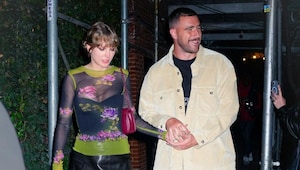
Every couple should fight (Taylor and Travis included)

Fun cosy socks you should invest in while winter is still around

How ‘The Housemaid’ movie stacks up to the book
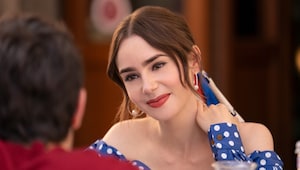
Emily is heading back to Paris for season six but is this where we say goodbye?
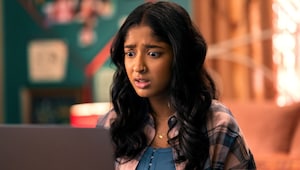
Keeping the camera on or off: What’s the right way to go about professional meetings?
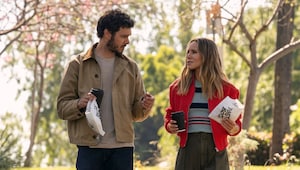
Choremance is the new dating trend making everyday errands feel romantic

Why going offline is suddenly Gen Z’s favourite flex
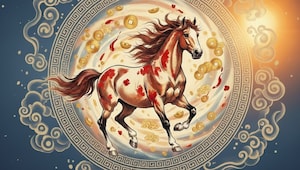
It's the Year of the Horse and here's what it means for you

If a man wears this, date him….

Vanishing acts or forever energy? Here’s how you can enter the new year with a happy heart
